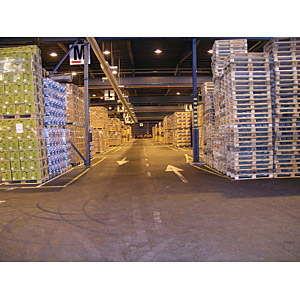Business leaders seeking to gain competitive advantage are honing strategic vision to reach their company’s desired future state and expansion goals. Even though organizations may develop a blueprint for growth, the larger challenge is to execute against that vision to achieve long-term value creation. With commodity costs up and competition increasing, many companies say they have done all they know to do. Their operations run as well as can be expected, but it is still a challenge to hit their numbers.
So how do North American HVAC distributors expand into their desired future state and increase economic profit? Executives increasingly are recognizing that supply chain optimization is the answer. Research shows supply chain excellence helps improve the overall financial health of an organization.
IDENTIFYING THE PROBLEMS
Today, with fuel costs rising and consumers requiring next-day deliveries, many companies are pushing toward having more facilities located closer to their customers. Transportation networks, however, are often complex with multiple manufacturing plants and warehouses, involving several transportation modes, and utilizing dozens of carriers with inbound and outbound freight. To meet today’s transportation challenges, supply chain networks are screaming for optimization in order to shorten transport time and lower costs.
Supply chain managers are tasked with making the critical decisions to improve supply chain operations by taking costs out of the system while improving customer service and profitability. The best managers rely not only on their experience but also on data-based decision-making. Making the best decision to minimize supply chain costs and maximize profit requires accuracy in data.
Finding the right level of data detail to inform accurate decision tradeoffs while searching for the optimal decisions is an art as much as it is a science. It requires experience and expertise in both supply chain operations and optimization modeling.
OPTIMIZING THE NETWORK
Let’s first define optimization. Some organizations define optimization as meeting KPIs at the lowest possible cost. For others, optimization means 99 percent on-time delivery with zero claims. Others define optimization as maximum asset utilization, minimal carbon footprint, lowest fuel usage, etc. Optimizing your transportation network involves optimization of the network itself, optimization of carrier assignment, and daily execution optimization.
Network optimization begins with a study of a business’ entire supply chain, from suppliers and raw materials through manufacturing to distribution to the end customer. These studies affect every aspect of inbound and outbound transportation, including facility location, modes, rates, postponement strategies, and inventory.
Optimizing the entire transportation operation saves costs, drives efficiencies, and improves customer service. Optimization requires specialized and powerful technology that determines criteria such as the number of transportation assets needed, selects the best modes and routes for shipments, locates assets at optimal locations, and maximizes opportunities to consolidate shipments.
If manufacturers don’t have the experience or knowledge in-house to accomplish an optimized supply chain, they can outsource this functionality to a third-party logistics provider.
ASSESSING THE SUPPLY CHAIN
Just as the road to value creation for any business begins with evaluation, so does the road to supply chain optimization. Prior to developing a comprehensive supply chain strategy, manufacturers and distributors need to perform a thorough assessment of their entire order-to-cash cycle. The assessment places emphasis on understanding key departmental metrics in purchasing, finance, customer service, and production and shipping, among others.
Understanding the current state can eliminate failed expectations and is paramount in the development of a strategy that emphasizes enterprise value creation rather than short-term reductions in shipping costs. Manufacturers should achieve and sustain value by fostering continuous improvement throughout the organization.
Viewing the world through a lens of continuous improvement, and armed with waste-fighting tools such as value stream mapping (VSM), manufacturers can slim down, tone up, and work out efficient flows of materials all along the supply chain. A lean supply chain is one that produces only what is needed, when it is needed, and where it is needed. The goal of lean is to eliminate waste within an organization. An optimized supply chain stays lean, manages costs, and responds instantaneously to even minor fluctuations in demand.
Optimizing the supply chain is achieved by creating efficient transportation and distribution networks focused on reducing the non-value-added activities with lean principles of process improvement. Companies will see significant reductions in cost and risk throughout the supply chain and across the enterprise as a result. With optimization and continuous improvement, companies are able to achieve once-elusive long-term growth, which is necessary to broaden market penetration and achieve a more dominant position in the industry.
Visit www.transportationinsight.com for more information.
Eric Lail is vice president of client services and continuous improvement for Transportation Insight, a 3PL offering carrier sourcing, transportation management system applications, freight bill and audit services, lean consulting, warehousing, international logistics, and business intelligence.


Report Abusive Comment